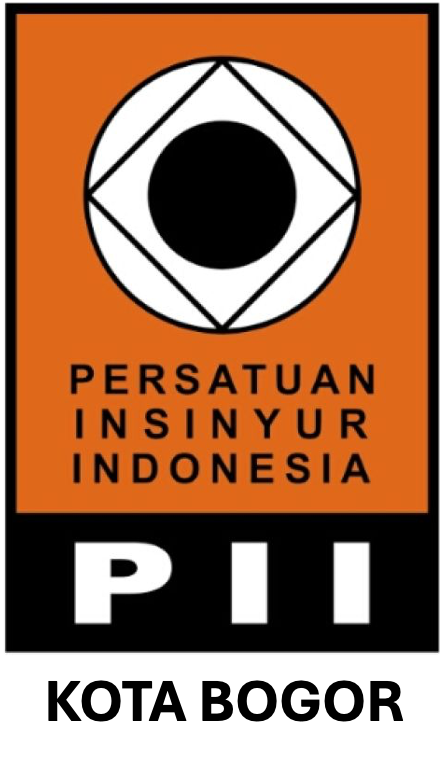Analisis Pengukuran Kecepatan Aliran Permukaan Sungai Dengan Metode “Large Scale Particle Image Velocimetry” Menggunakan Fotogrametri Terestris, Studi Kasus : Sungai Mungkung, Kabupaten Sragen
Abstract
Purpose – The infeasibility and impracticality of using intrusive measurement equipment to collect information on flow velocities in complex environments created a compelling need for alternative, nonintrusive velocimetry approaches. Several studies have already demonstrated that drone-borne imaging techniques allow for quick, safe and comprehensive quantification of surface flow velocities. Despite the efforts of the existing studies, there is still limited experience in using such techniques. Within this context, this research aimed to assess the feasibility of using drone-borne imaging techniques and large-scale particle image velocimetry (LSPIV) to infer surface flow velocities within large-scale fluvial applications. This research also aimed to provide a process-based explanation as to why or how certain methods are effective or ineffective when applying LSPIV. A fundamental requirement in LSPIV is that the surface of the flow must be seeded with tracers. This research investigated whether it is feasible to apply LSPIV in flows seeded by naturally occurring features, such as foam and air bubbles generated by turbulent activities in the flow. Methods and materials – A detailed workflow was developed to guide the LSPIV analyses performed in this study. The LSPIV workflow can be characterised by four main stages, including (1) data acquisition and preparatory work; (2) image pre-processing; (3) image evaluation; and (4) post-processing. The first stage involved the collection of video recordings of the flowing water near hydraulic structures at two study areas in the Netherlands, namely the Dinkel River at Lattrop-Breklenkamp and Meuse River at Sambeek. These recordings were collected by both a drone and terrestrial camera system. In the second stage, images obtained from the field campaign were processed through the application of image stabilisation and orthorectification to reduce the effects of image distortions, deformations and instabilities; the imagery was also enhanced with various filters to improve the detectability and traceability of features on the water surface. Subsequently, the LSPIV algorithm was applied to the pre-processed imagery to obtain a vector field representing the surface water flow velocities at both study areas. The LSPIV algorithm essentially attempts to estimate the displacement of distinct features on the water surface through the application of a statistical pattern matching technique; more specifically, the cross-correlation function is computed to achieve this. The algorithm then relates the
recorded displacements to the velocity field of the observed flow. In the final stage, spurious vectors in the vector field were corrected, and an accuracy assessment was performed using reference velocity measurements obtained from the so-called float method. This research further explored the influence of various experimental configurations and image processing parameters on the LSPIV outputs through an extensive sensitivity analysis. Finally, this study performed a comparative analysis of drone-based LSPIV with conventional, fixed camera LSPIV implementations. Results and discussion – Naturally occurring features on the water surface were found to be omnipresent in the Dinkel River study area at the time of the field campaign; the seeding density was estimated to be around 10%, and overall adequate seeding homogeneity was observed. The LSPIV derived surface water flow velocities for the Dinkel River case were in relatively good agreement with the reference velocity measurements, with mean absolute velocity deviations in the order of 10-2 m/s and normalised root mean squared values ranging between 5% and 9%. The velocity fields could accurately describe the bulk flow behaviour and capture horizontal flow structures at different spatial scales. The LSPIV analysis in the case of the Meuse River study area yielded comparatively worse agreement with the reference measurements; the accuracy assessment revealed mean absolute deviations from the reference values in the order of 10-1 m/s and a normalised root mean squared error value around 35%; the poor performance was attributed to the low seeding densities (±5%) and strong seeding inhomogeneity. The sensitivity analysis highlighted the importance of specifying the appropriate sampling frequency at which the images are collected. In low flow conditions, it was required to resample the data to lower sampling frequencies (2-5 Hz) to achieve adequate LSPIV performance. Other key parameters in LSPIV implementations are the image sequence duration, interrogation area size and image resolution. The appropriate image sequence duration is highly case-specific and should be selected with extreme care prior to the LSPIV analysis; durations of only several seconds may not be sufficient to obtain satisfactory results. The interrogation area size and image resolution are particularly important for flows that contain relatively large surface features. Based on experimental observations, the inclination of the camera axis with respect to the water surface must be kept as small as possible to minimise error associated with perspective distortions. Furthermore, the comparative analysis of drone-based LSPIV with fixed camera LSPIV implementations strongly favoured the use of drones in large-scale fluvial applications; the significant inclination of the camera axis and improper positioning of the stationary camera setup resulted in significant measurement error. Above all, low seeding densities (<10%) and seeding inhomogeneity were found to be detrimental for the measurement accuracy. In
the case of tracer scarcity and seeding inhomogeneity, it is recommended that the LSPIV analysis is performed on the video portions that exhibit the best seeding conditions instead of the full video. Conclusion – Based on the findings of this research, it can be argued that drone-based LSPIV offers a promising method for capturing the spatial and temporal structure of fluid motions without the need for artificial flow seeding. However, one must realise that the successful application of LSPIV requires a thorough understanding of its underlying principles and the parameters associated with data collection and image processing. Under the right conditions and by carefully selecting the appropriate experimental configurations and input parameters, accurate surface water flow velocity estimations may be obtained. Future research should focus attention on further establishing the validity of drone-based LSPIV; this can done by rigorously testing drone-based LSPIV implementations in different environments at different spatial scales under varying seeding and flow conditions.
Downloads
References
Copyright (c) 2024 Jurnal Teknik Sipil dan Lingkungan

This work is licensed under a Creative Commons Attribution-NonCommercial-NoDerivatives 4.0 International License.
Authors who publish with Jurnal Teknik Sipil dan Lingkungan, JSIL agree to the following terms:
a. Authors retain copyright and grant the journal right of first publication with the work simultaneously licensed under a Creative Commons Attribution License that allows others to share the work with an acknowledgment of the work's authorship and initial publication in this journal.
b. Authors are able to enter into separate, additional contractual arrangements for the non-exclusive distribution of the journal's published version of the work (e.g., post it to an institutional repository or publish it in a book), with an acknowledgment of its initial publication in this journal.
c. Authors are permitted and encouraged to post their work online (e.g., in institutional repositories or on their website) prior to and during the submission process, as it can lead to productive exchanges, as well as earlier and greater citation of published work (See The Effect of Open Access).











